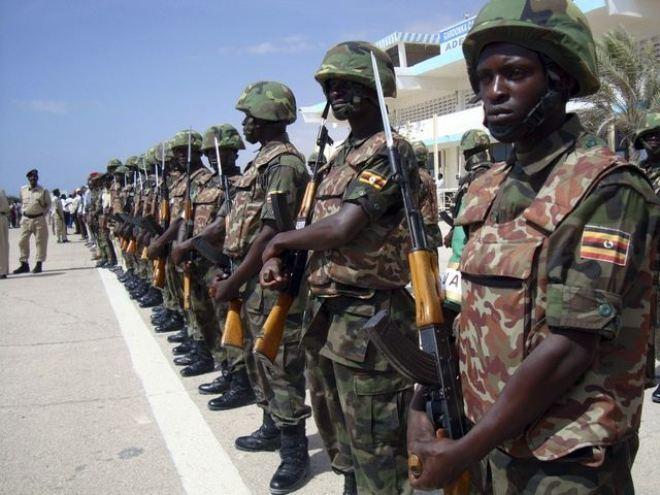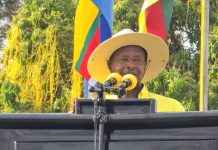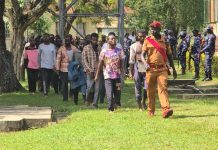Faridah N Kulumba
Africa-Press – Uganda. The Uganda People’s Defence Force (UPDF) under the African Union Transition Mission in Somalia (ATMIS) at the end of June 2023 handed over one of their Forward Operating Bases(FOB) to the Somalia National Army (SNA) as part of the ongoing efforts for the withdrawal from Somalia.
On 27th June UPDF handed over its Forward Operating Base at Albao in Southwest State to the SNA during the function that was presided over by the Ugandan Lt Col Steven Kashagama and Somalia’s Capt Mohamed.
This happened after a month since the death of dozens of Ugandan soldiers were killed in a deadly attack by the al Shabaab militants at its army base.
Last month the President of Uganda Yoweri Kaguta Museveni announced that 54 Uganda UPDF soldiers were killed after al-Shabaab fighters stormed the base in Bulamarer, 130 kilometers (80 miles) southwest of the Somali capital, Mogadishu.
President Museveni who is also a commander in chief of the UPDF tasked the Chief of Defense Forces, Gen Wilson Mbadi to set up a probe team to beef up the investigation into the attack. In his first statement, Mr. Museveni warned the al-Shabaab militants that the operations are continuing and that they will regret their actions.
As soon as the attack happened the government of Uganda deployed more land forces to Somalia under the leadership of Lt Gen Kayanja Muhanga, the commander of Land Forces to devise the way forward.
Maj. Gen. (Rtd) Nathan Mugisha, Uganda’s Deputy Ambassador to Somalia said that what happened to the UPDF army in Somalia will not distract their mission. He added that they will continue with the Somalia stabilization processes, supporting the Federal Government, the Somali National Army, and the people so that they can have stability, economic development, and transformation.
UPDF’s explanation for withdrawing
According to Lt. Col. Kashagama Uganda is confident in the Somali National Army to secure the population and defend the area against al-Shabaab.
The UPDF handed over the security responsibility for Albao and the neighbouring areas to the Somali security forces. They explained that in the time they have been with them, they have shown charisma, energy, and resilience. There is no doubt they are ready to secure the population.
The development is part of the ongoing process that will see the African Union Transition Mission in Somalia (ATMIS) withdraw 2000 troops by the end of this month in compliance with United Nations Security Council Resolutions 2628(22) and 2670(22) which require ATMIS to gradually transfer security responsibilities to the Somali security forces.
In March 2022, the Peace and the Security Council of the African Union issued a communique detailing the mandate of the African Transition Mission in Somalia (Atmis). It said the new mission which replaced the African Union Mission in Somalia or Amisom, would continue to fight the al Shabaab militant group and develop the capacity of Somali Armed Forces (SAF) t take over security.
Consequently, ATMIS was mandated with stabilizing Somalia but also aim at transferring the full responsibilities of national security to the Federal Government of Somalia for the next two years.
Currently, at least four ATMIS Forward Operating Bases previously occupied by the Burundi National Army( three) and UPDF (one) have been handed over to the Somali National Army as part of the transition process that will bring to an end the Africa Union peacekeeping mission which has been in Somalia since 2007.
UPDF presence in Somalia
For almost 16 years Uganda became part of the African Union Mission in Somalia (AMISOM) which ensured Somalia was liberated from al Shabaab Islamic insurgents. Uganda was the first country to send troops to Somalia and this opened way for other African countries including Djibouti, Kenya, and Ethiopia to also deploy in the mission which was at one time dubbed as “dead on arrival” until UPDF’s arrival.
Uganda was the first country to deploy and has contributed the biggest chunk of troops credited for having at least stabilized Somalia.
The UPDF controlled the largest area in Somalia after being deployed in Sector One in Benadir,(which has 16 districts) Banadir, and Lower Shabelle regions having pushed Al Shabaab militants over 200km away from Mogadishu city.
The AMISOM troops led by UPDF have helped Somalian authorities to be able to build institutions and a political system by driving the al-Shabaab out of key urban centres.
Whereas troop-contributing countries and the African Union sought more funds to keep the mission going, donors as Somali authorized felt the mission’s value was waning.
However, counter-insurgency efforts have of late run out of steam but on the other hand, al-Shabaab insurgents have continued to gain ground and carry out attacks.
Even though Uganda has been very instrumental in peacekeeping in the region but one of Uganda’s opposition parties the Forum for Democratic Change (FDC) says it’s high time the UPDF to exit from Somalia saying Ugandans have not benefited from the mission.
For More News And Analysis About Uganda Follow Africa-Press






